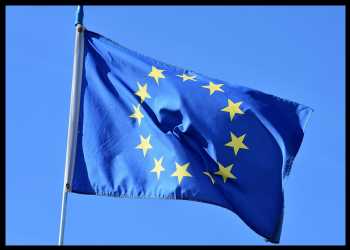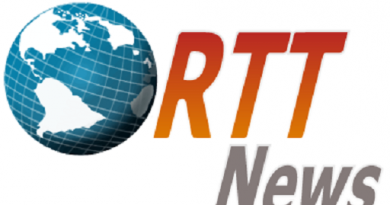Eurozone GDP Growth Tops Expectations; Inflation Slows
Regardless of the impact of interest rate hikes, the euro area economy expanded more than expected in the second quarter, underpinned by the out-performance of the Irish and French economies, official data showed Monday.
Separate data revealed that headline inflation slowed for the third straight month in July on falling energy prices, while the core measure held steady.
Gross domestic product registered a sequential growth of 0.3 percent after remaining unchanged in the first quarter, flash estimate from Eurostat showed. GDP was forecast to advance 0.2 percent.
Year-on-year, economic growth eased to 0.6 percent from 1.1 percent. This was also slightly better than economists’ forecast of 0.5 percent.
The 0.3 percent expansion was due to the huge increase in Ireland’s economic growth and the export of a cruise ship from France, Capital Economics’ economist Jack Allen-Reynolds said.
As these are not sustainable source of growth, and more of the hit from tighter monetary policy to come, the region will slip into recession soon, the economist added.
ING economist Bert Colijn said continued broad stagnation of economic activity is the most likely outcome over the coming quarters with monetary tightening expected to have significant dampening effect.
In the World Economic Outlook, the International Monetary Fund said the growth in the currency bloc will ease to 0.9 percent this year from 3.5 percent in 2022. The growth is set to improve to 1.5 percent next year, the lender said.
The IMF expects the European Central Bank to raise its policy rate to a peak of 3.75 percent in 2023 and then to ease it gradually in 2024.
The EU27 registered nil growth in the second quarter, following an expansion of 0.2 percent a quarter ago. Annually, GDP was up 0.5 percent.
Ireland posted a strong 3.3 percent growth compared to the previous quarter. Driven by transport equipment exports, France’s GDP advanced 0.5 percent.
Spain’s GDP climbed 0.4 percent. Meanwhile, the German economy stagnated and Italy shrank 0.3 percent.
Inflation in the 20-nation currency bloc slowed to 5.3 percent in July, in line with expectations, from 5.5 percent in June.
At the same time, core inflation held steady at 5.5 percent, slightly higher than the expected rate of 5.4 percent.
Last week, the ECB had raised its interest rates for the ninth policy session in a row. The key refi rate was lifted by a cumulative 375 basis points since July last year, citing the prospect of inflation in the euro area staying too high for too long.
ECB President Christine Lagarde said future policy decisions would be data-dependent and that policymakers are having an open-mind about them. This has raised speculation that the ECB is headed for a pause in the tightening cycle.
Eurostat data showed that an increase of 10.8 percent in food, alcohol and tobacco prices had the highest upward effect on inflation. This was followed by a 5.6 percent rise in services cost.
Non-energy industrial goods prices registered a slower growth of 5.0 percent. By contrast, energy prices declined again in July, down by 6.1 percent.
Source: Read Full Article


